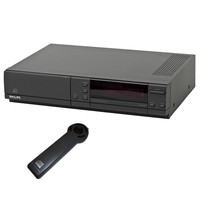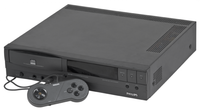Philips CD-i 220/25
| Home > Browse Our Collection > Games Consoles > Philips > Philips CD-i 220/25 |
|
The Philips CD-i (Compact Disc Interactive) is an interactive multimedia CD player developed and marketed by Royal Philips Electronics N.V. This category of device was created to provide more functionality than an audio CD player or game console, but at a lower price than a personal computer with a CD-ROM drive at the time. The cost savings were due to the lack of a hard drive, floppy drive, keyboard, mouse, monitor (a standard television was used), and less operating system software. CD-i also refers to the multimedia Compact Disc standard used by the CD-i console, also known as Green Book, which was developed by Philips and Sony (not to be confused with MMCD, the pre-DVD format also co-developed by Philips and Sony).
Work on the CD-i began in 1984 and it was first publicly announced in 1986. The first Philips CD-i player, released after many delays in 1991 and initially priced around USD $700.
The CD-i proved to be a commercial failure in that market segment and some of its games are perceived to be among the worst ever made. Though this is usually by placing them in a modern context often in YouTube videos and online game sites, so is perhaps rather unfair. Philips ceased publishing video games for the platform in 1998.
Among the system’s weaknesses are just having 2 channels for sound, meaning that music for games must be in one, and sound effects in the other.
The machine is probably best known for being home to some Nintendo licensed games, products of a deal struck between the two companies when Nintendo cancelled a proposed CD drive for the SNES, three Zelda games and one featuring Mario were well received at the time, but thanks to internet folklore, they are often met with derision. 16-bit 68070 CISC Chip Our model is the CDI 220/25 ref: AH01 9304 000207 and was very kindly donated by Alan Aitken the librarian for the Scottish Government at Victoria Quay, Edinburgh
Manufacturer: Philips Other Systems Related To Philips CD-i 220/25 :
This exhibit has a reference ID of CH21466. Please quote this reference ID in any communication with the Centre for Computing History. |
Click on the Image(s) For Detail
|












